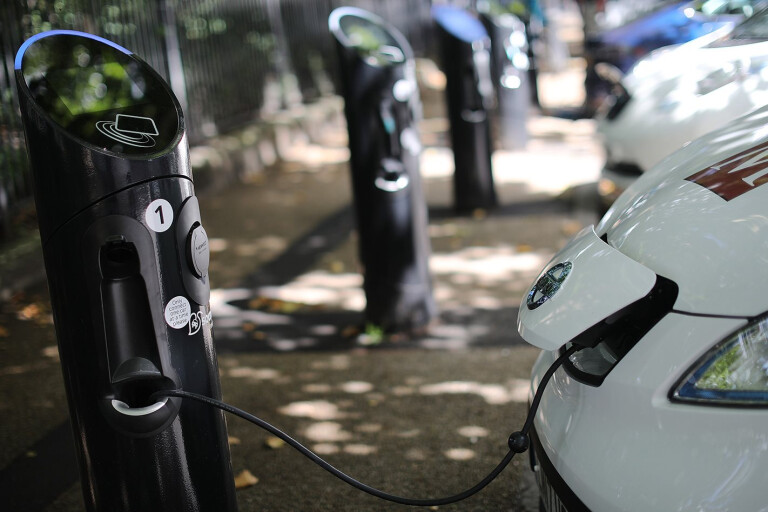
Snapshot
- No stamp duty on qualifying EVs
- No road tax for six years
- Subsidies on cars under $68k
A couple of weeks after Victoria’s patchy, wrong-headed policy failed to adequately atone for jumping the gun on enforcing a road tax, the NSW Liberal government unveiled its own. While Gladys Berejiklian’s Federal counterparts continue to dither on EV policy, the conservatives in Sydney backed up their recent tough words for Canberra with some real action.
The headline of the policy is not what’s in it, it’s what isn’t. Or, more accurately, what isn’t for a few years. While the Victorian government introduced a road tax for EVs separately to its incentive program, the NSW government was upfront about its intention to charge EV users starting in 2027.

Transport Minister Andrew Constance said that a road charge shouldn’t come into force until around forty percent of cars were electric. We said that would probably change, and it has, falling to thirty percent. If the proportion of new car sales hits thirty percent before 2027, the road tax will start from then. As with Victoria, the charge is 2.5c per km for EVs and two cents for plug-in hybrids.
The policy states that EVs under $78,000 will not be subject to stamp duty, a permanent change that will also cushion the effect of the road user tax. NSW Treasurer Dominic Perrottet says it’s the first in a list of long-term tax reforms. This particular incentive is worth up to $3000, but once you go over $68,750, you lose the other incentive.

That other incentive is a $3000 rebate applied to cars that come under $68,750. When you add the stamp duty saving, that’s around $5300 off the on-road price. It’s by far the most generous policy in the country when you add it all together. The rebate will apply to the first 25,000 private sales from September 1, 2021.
On top of that there is a promise to spend $171 million on public charging infrastructure, $141 million of that being on ultra-fast chargers. That suggests 200kW+ DC chargers to reduce the amount of time spent charging and keeping people moving. Chargefox already offers 350kW units in select locations and Tesla 120kW or 200kW Superchargers.
Another $20 million will go on chargers at public transport hubs such as train stations. It’s not clear who will deliver the infrastructure but it will likely go to private businesses.

Constance says that this investment should translate to a charger every five kilometres in urban areas with limited off-street parking and 100km along major highways. It will be interesting to see how the government works out the urban placements, with huge gaps in coverage persisting in the major capital cities.
A slightly random inclusion in the policy is allowing EV drivers to use T2 and T3 transit lanes. That seems counter-intuitive as it encourages car use on already congested roads. It won’t have much of an impact in the short-term, but EV owners will join motorbikes, taxis and hire cars in the transit lane. As if that Tesla Model 3 owner with the NO OIL plate wasn’t insufferable enough.
The combination of stamp duty abolition and the measured introduction of a road tax points to a more coherent policy than Victoria’s. While the headline number of $490 million is much higher than Victoria’s, it’s a policy that eases motorists into the idea of a road tax.

Road taxes are inevitable as the income from the Federal fuel excise falls. But at this early stage, it’s a negligible number. Victoria’s gun-jumping move not only discourages EV uptake by making people mad, it’s going to cost more to collect than it makes and is effectively wiped out by the incentive program.
NSW might be fond of wasting money on stadiums, but at least it knows introducing a tax virtually without warning when you want to encourage a new way of doing things is a bad idea. This policy was warmly welcomed by the industry, particularly car makers who sell cars that fall under the incentive limits. That’s to be expected because it will mean more sales when the policy kicks off in September.

With another $105 million to come in fleet incentives, NSW has put itself firmly on the front foot in encouraging EVs. While Victoria’s policy isn’t all bad – both governments want half of new car sales to be EVs by 2030 – the NSW policy is far more encouraging and comes with less finger-wagging about EV owners “paying their fair share.”
It also clearly defines a bipartisan target of net zero emissions by 2050. In a political climate where nobody can agree on anything without an ugly public brawl, that alone sets this policy apart.
COMMENTS